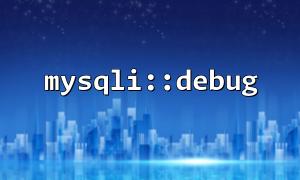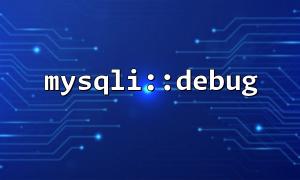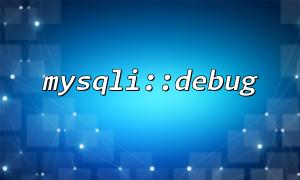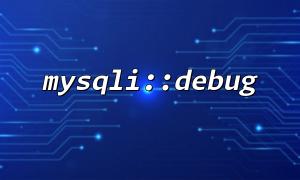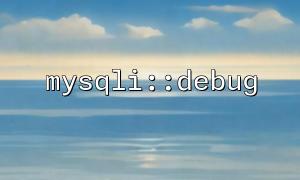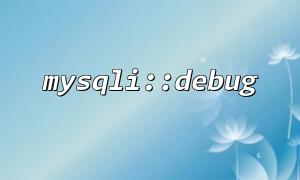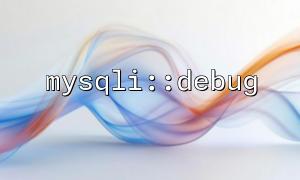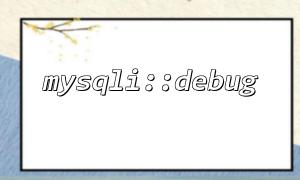When using the MySQLi extension, mysqli::debug is a very useful debugging tool that helps developers view detailed information about interactions with the MySQL database. By calling mysqli::debug, you can print the execution process of MySQL queries, error messages, and more. However, many developers find that mysqli::debug does not respond when they use it. This article outlines some common ineffective reasons to help you identify the issue.
mysqli::debug requires that the MySQL debugging feature be enabled. If MySQL is not configured with debugging enabled, calling mysqli::debug will have no effect. You can check the MySQL configuration file (typically my.cnf or my.ini) to see if the debugging feature is turned on, or use the following SQL command to check the debugging status:
SHOW VARIABLES LIKE 'log_output';Make sure that the value of log_output is set to TABLE or FILE, otherwise, debugging information will not be logged.
If you are using a connection method that does not support debugging when creating the MySQLi connection, mysqli::debug may not work. For example, when using the mysqli_connect() method to connect to the database, debugging may not be effective. To ensure debugging functions properly, it is recommended to use the object-oriented approach to create the database connection:
$mysqli = new mysqli('localhost', 'username', 'password', 'database');
$mysqli->debug("test");If you are still using mysqli_connect(), make sure to check other configurations or try switching to the object-oriented approach.
Sometimes, debugging information may be output to a log file or cached by the browser's buffer, which prevents you from seeing the debugging output directly on the screen. You can try modifying the php.ini configuration to ensure that error messages are displayed properly in the browser.
In php.ini, enable the following configuration:
display_errors = On
error_reporting = E_ALLAdditionally, make sure PHP output is not buffered. You can disable output buffering or flush the buffer:
ob_end_flush();If your code uses a URL output by mysqli::debug (such as a URL for connecting to the database), make sure it does not contain an incorrect domain name. For example, it should be:
$mysqli->real_connect("http://m66.net/dbconnect");If you accidentally used an invalid URL, ensure that the URL is valid and matches your MySQL service. If the connection URL is incorrect, mysqli::debug's debugging output will not work.
mysqli::debug must be called in the correct place. It should be called before executing the MySQL query to capture and print the relevant debugging information. If you call it after the query has executed, debugging information may have already been lost. Make sure to use it before performing database operations:
$mysqli->debug("Debugging MySQL Query");
$query = "SELECT * FROM users";
$result = $mysqli->query($query);mysqli::debug is primarily used to print detailed information about the query execution process. If your query does not have any issues, there may be no useful debugging output. Make sure your query has an actual problem or use more complex queries to generate more debugging output.
If you still cannot see the debugging output, check your browser's cache or the server's configuration. Some servers may cache the output, preventing you from seeing the debugging information in real-time. Clearing the browser cache or disabling caching on the server may resolve this issue.
mysqli::debug is a very useful tool, but it does not automatically output debugging information in all situations. If you encounter a lack of response, check the above reasons one by one and adjust the configuration to ensure it works properly. Debugging information can help you identify potential database connection issues, query problems, and other errors that may occur when interacting with MySQL.
Related Tags:
mysqli